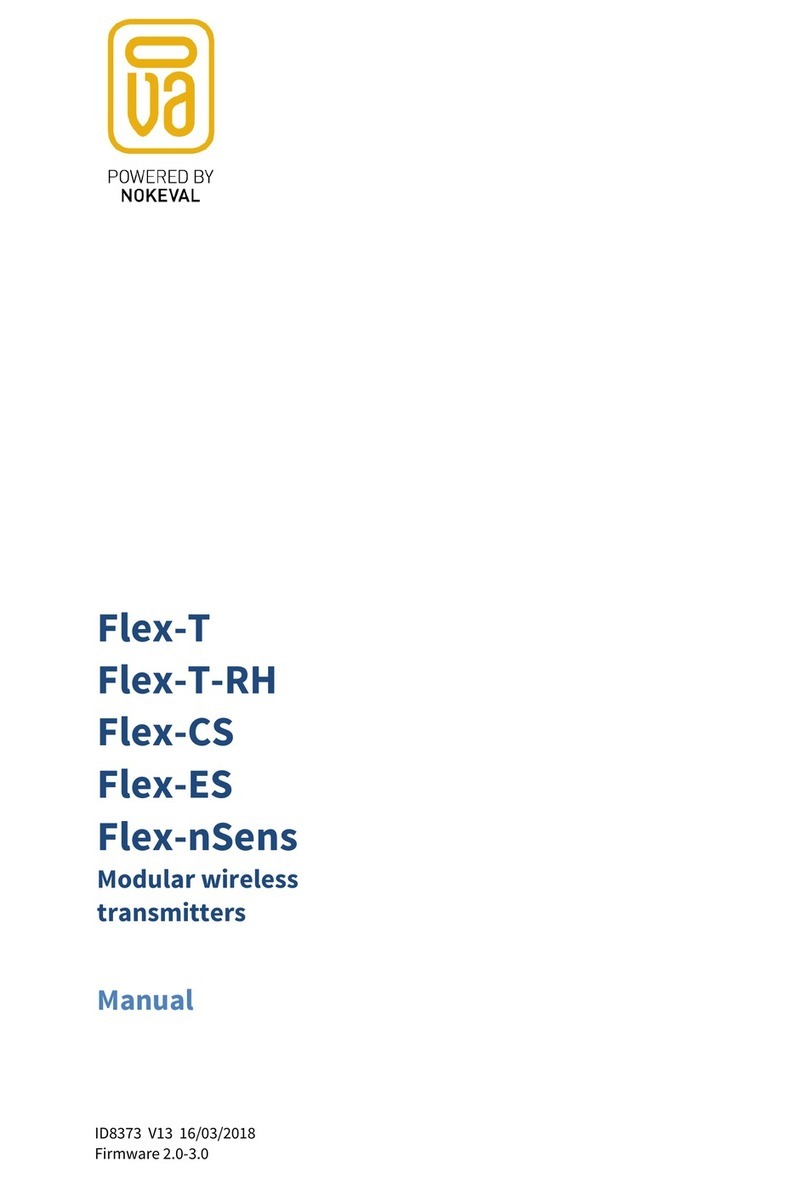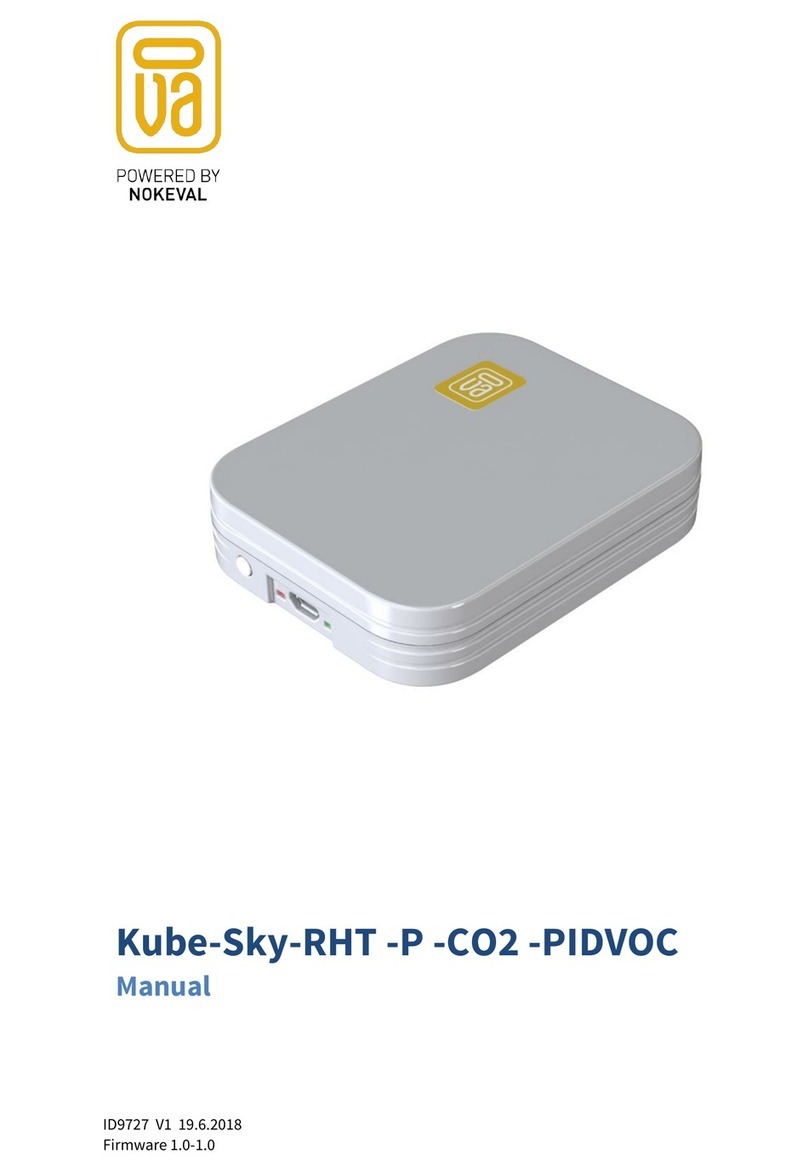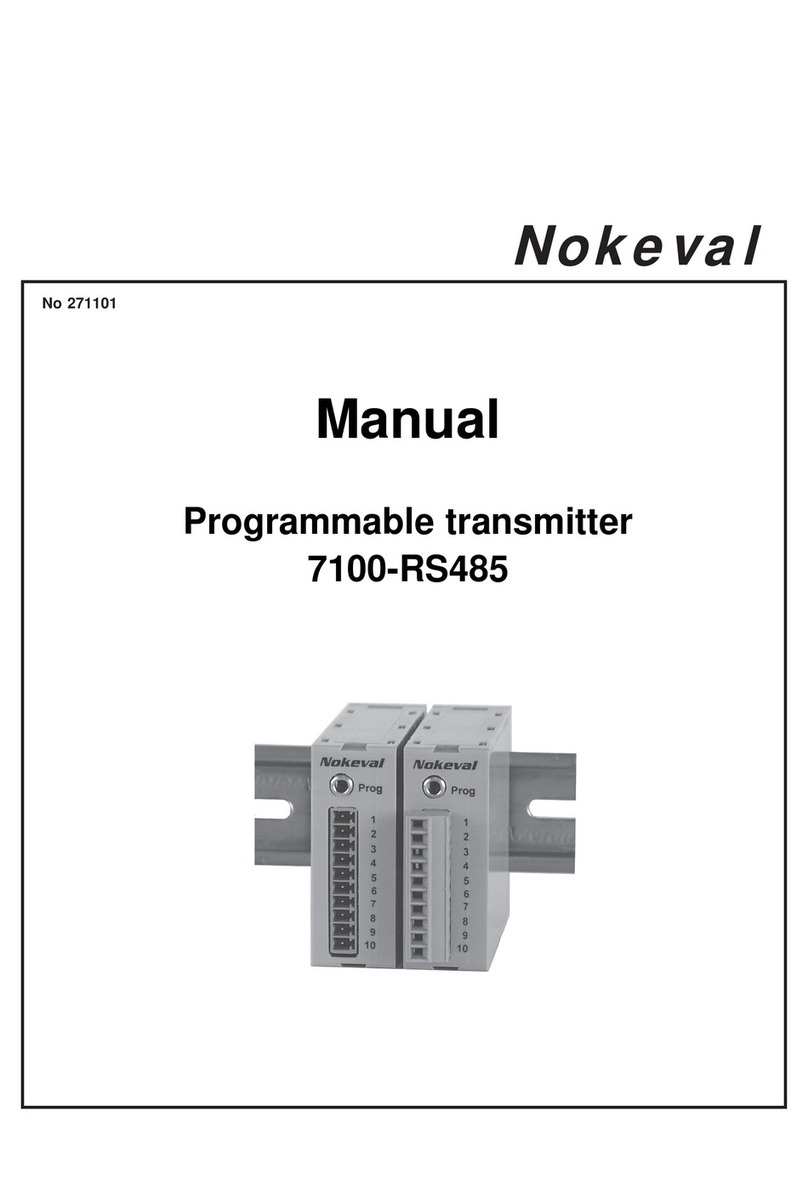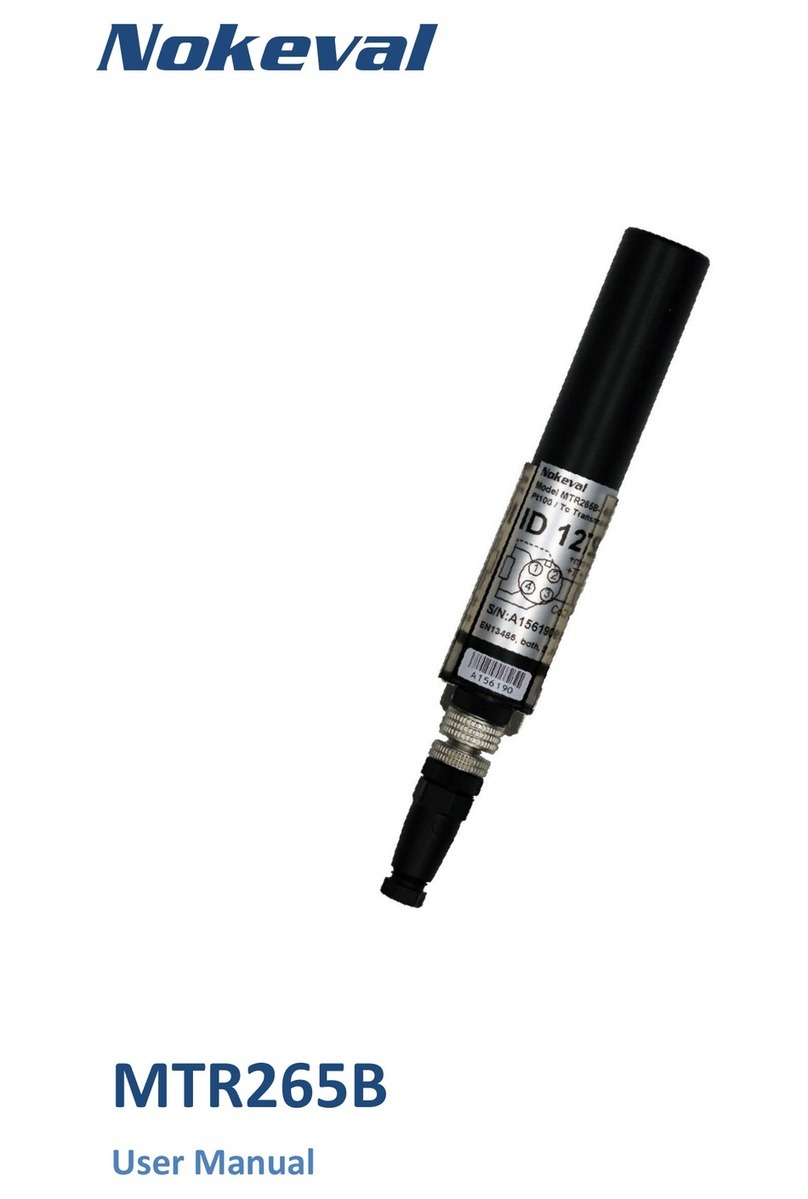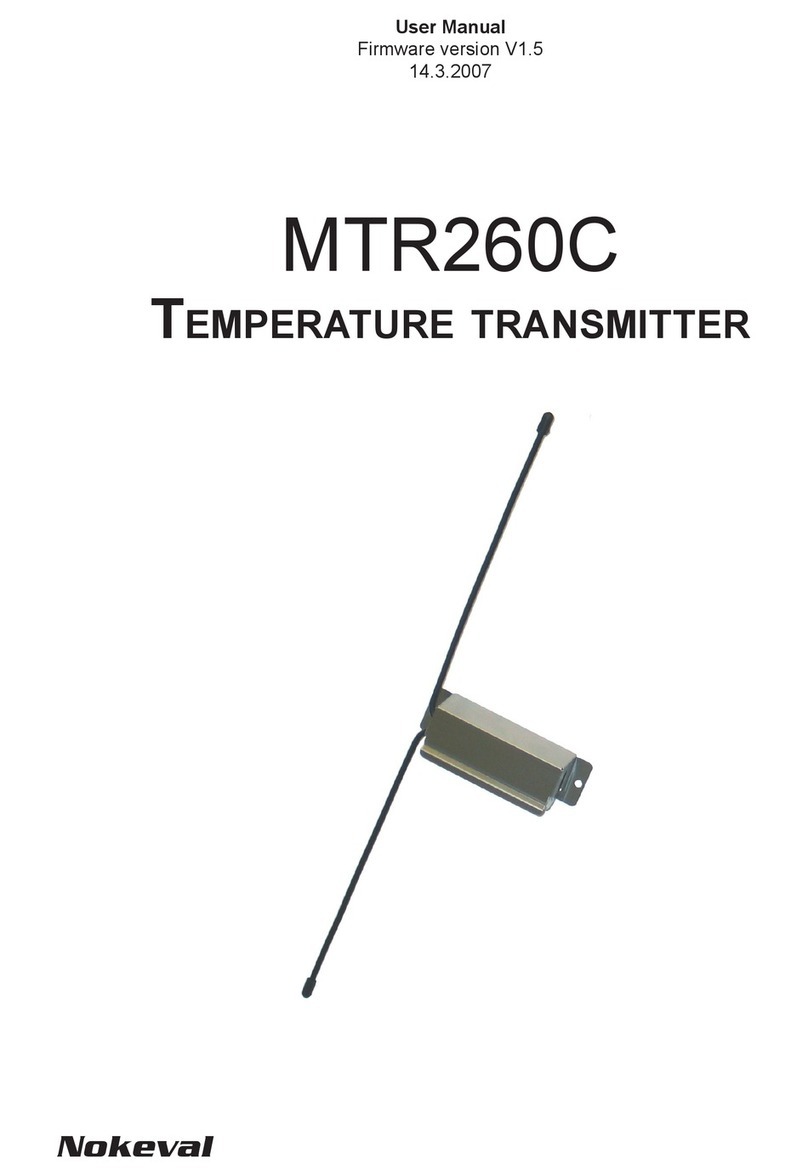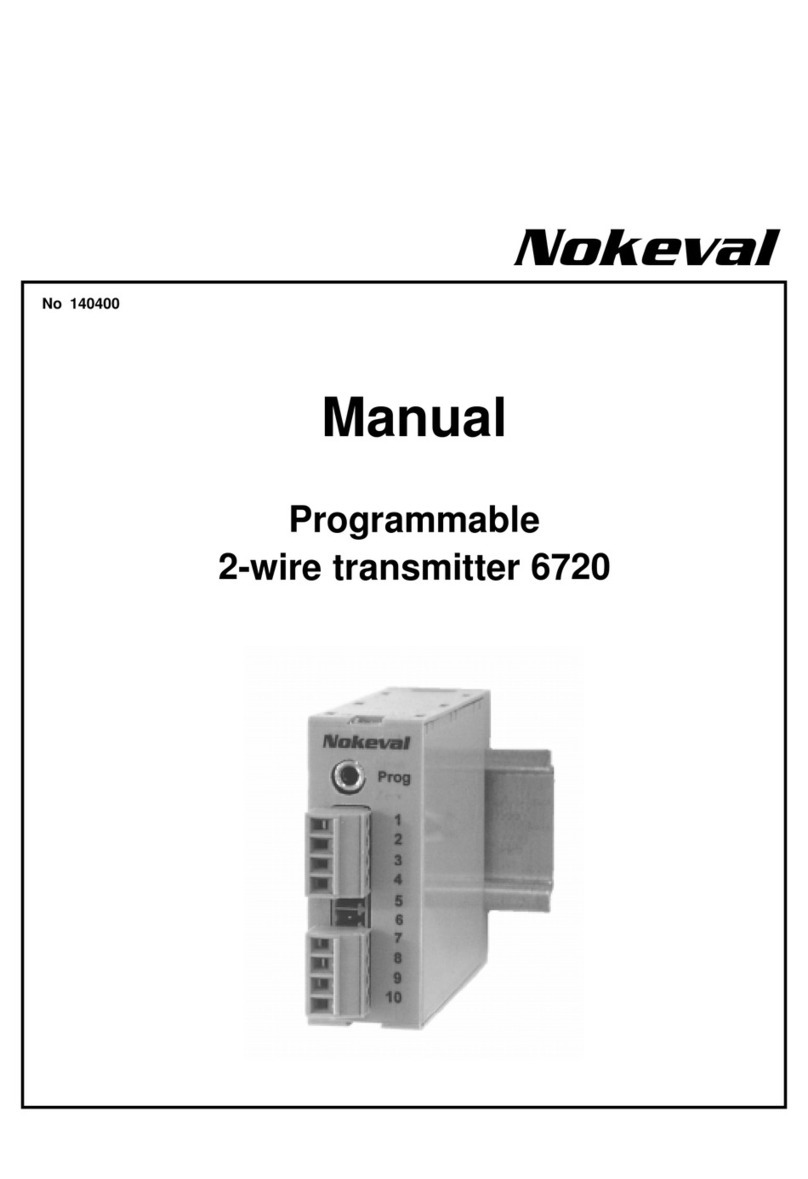Introduction
The 6821 is a rail-mounted two-channel measurement unit for temperature sensors and other electrical
inputs. The input channels are individual and can be used for different signals. The unit has two analog
outputs or alternatively one analog and one serial output. The serial output accepts Nokeval SCL and
Modbus RTU commands. Up to four logical alarms can control two alarm relays. The inputs are galvanically
isolated from the outputs and the supply voltage, but not from each other.
There are four built-in inter-channel functions: average, difference, minimum, and maximum. More
mathematical and conditional and timed operations may be realized with a simple programming language
called ELo.
The front panel has a four-digit display and four push buttons that can be used to monitor the readings and
to change the settings. The settings can also be edited on a computer using the RS-485 serial connection.
The ELo program can be edited on a personal computer only, not on the front panel.
How to use this manual
The transmitter consists of several quite independent blocks like the two inputs, analog outputs, serial
communications and so on. That is why this manual is also divided in chapters, one chapter concerning one
block.
First read through the chapter ”General” to find out how to mount the transmitter and to open the
transmitter case etc and how to get started with the configuration settings, either with the front panel or
with a PC software. Then advance to the chapter ”Power supply”. To get the transmitter to measure
something, read the chapter ”Inputs”. To get an analog output, read the chapter ”Analog output”, and so
on.
Table of contents
Introduction.......................................................................................................................................................2
General ..............................................................................................................................................................3
Power supply .....................................................................................................................................................7
Front panel ........................................................................................................................................................8
Inputs...............................................................................................................................................................12
Analog outputs ................................................................................................................................................17
Alarms and relays ............................................................................................................................................19
ELo program ....................................................................................................................................................21
Serial communications ....................................................................................................................................24
Specifications...................................................................................................................................................31
Manufacturer
Nokeval Oy
Rounionkatu 107
FIN-37150 Nokia
Finland
Tel +358 3 3424800
WWW: www.nokeval.com
Technical support: support@nokeval.com






